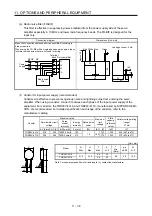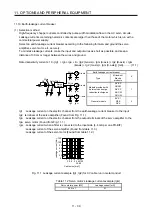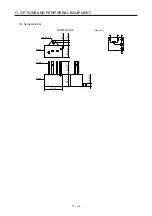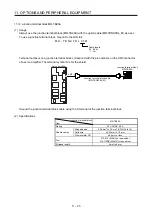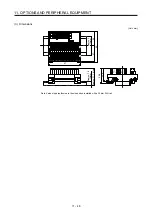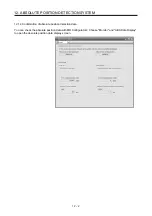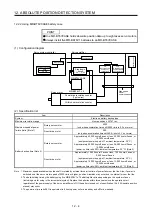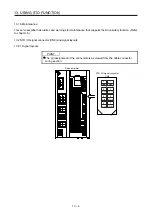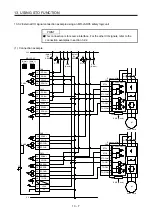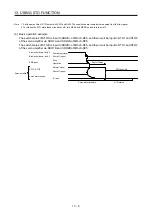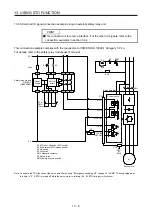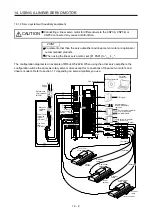
13. USING STO FUNCTION
13 - 2
13.1.4 Residual risks of the STO function
Machine manufacturers are responsible for all risk evaluations and all associated residual risks. Below are
residual risks associated with the STO function. Mitsubishi Electric is not liable for any damages or injuries
caused by these risks.
(1) The STO function disables energy supply to the servo motor by electrical shut-off. The function does not
mechanically disconnect electricity from the motor. Therefore, it cannot prevent exposure to electric
shock. To prevent an electric shock, install a magnetic contactor or a molded-case circuit breaker to the
main circuit power supply (L1/L2/L3) of the servo amplifier.
(2) The STO function disables energy supply to the servo motor by electrical shut-off. It does not guarantee
the stop control or the deceleration control of the servo motor.
(3) For proper installation, wiring, and adjustment, thoroughly read the manual of each individual safety
related component.
(4) In the safety circuit, use components that are confirmed safe or meet the required safety standards.
(5) The STO function does not guarantee that the drive part of the servo motor will not rotate due to external
or other forces.
(6) Safety is not assured until safety-related components of the system are completely installed or adjusted.
(7) When replacing this servo amplifier, confirm that the model name of servo amplifiers are exactly the
same as those being replaced. Once installed, make sure to verify the performance of the functions
before commissioning the system.
(8) Perform all risk assessments to the machine or the whole system.
(9) To prevent accumulation of malfunctions, perform function checks at regular intervals based on the risk
assessments of the machine or the system. Regardless of the system safety level, malfunction checks
should be performed at least once per year.
(10) If the upper and lower power modules in the servo amplifier are shorted and damaged simultaneously,
the servo motor may make a half revolution at a maximum. For a linear servo motor, the primary side
will move a distance of pole pitch.
(11) The STO input signals (STO1 and STO2) must be supplied from one power source. Otherwise, the
STO function may not function properly due to a sneak current, failing to bring the STO shut-off state.
(12) For the STO I/O signals of the STO function, supply power by using a safety extra low voltage (SELV)
power supply with the reinforced insulation.
Summary of Contents for MR-J4W2-0303B6
Page 39: ...2 INSTALLATION 2 8 MEMO ...
Page 97: ...4 STARTUP 4 20 MEMO ...
Page 181: ...6 NORMAL GAIN ADJUSTMENT 6 28 MEMO ...
Page 235: ...9 DIMENSIONS 9 6 MEMO ...
Page 245: ...10 CHARACTERISTICS 10 10 MEMO ...
Page 309: ...13 USING STO FUNCTION 13 14 MEMO ...
Page 365: ...15 USING A DIRECT DRIVE MOTOR 15 24 MEMO ...
Page 389: ...16 FULLY CLOSED LOOP SYSTEM 16 24 MEMO ...
Page 461: ...17 APPLICATION OF FUNCTIONS 17 72 MEMO ...
Page 556: ...APPENDIX App 41 ...
Page 585: ...MEMO ...

